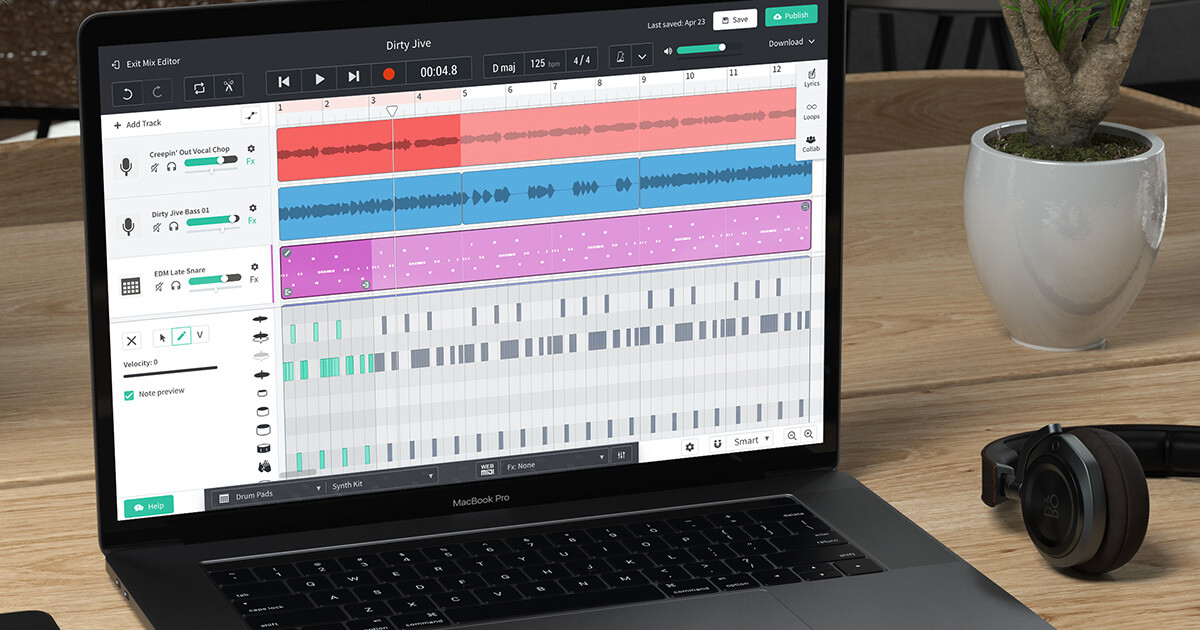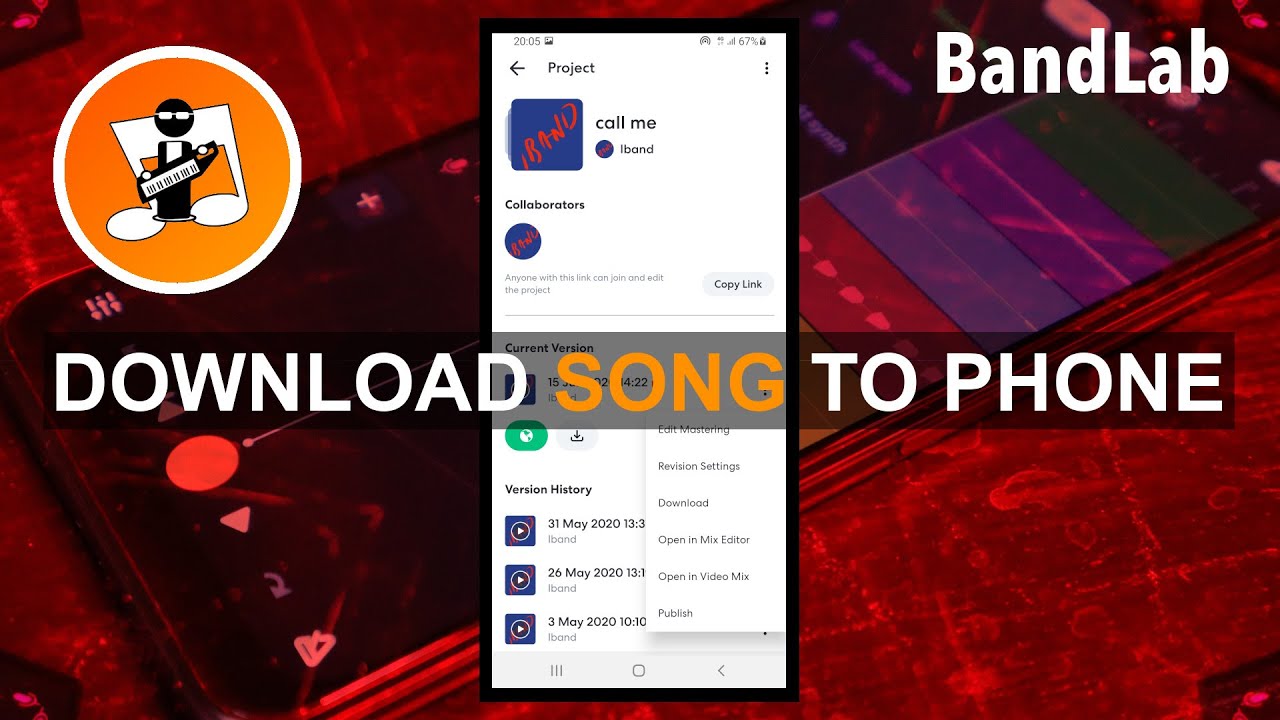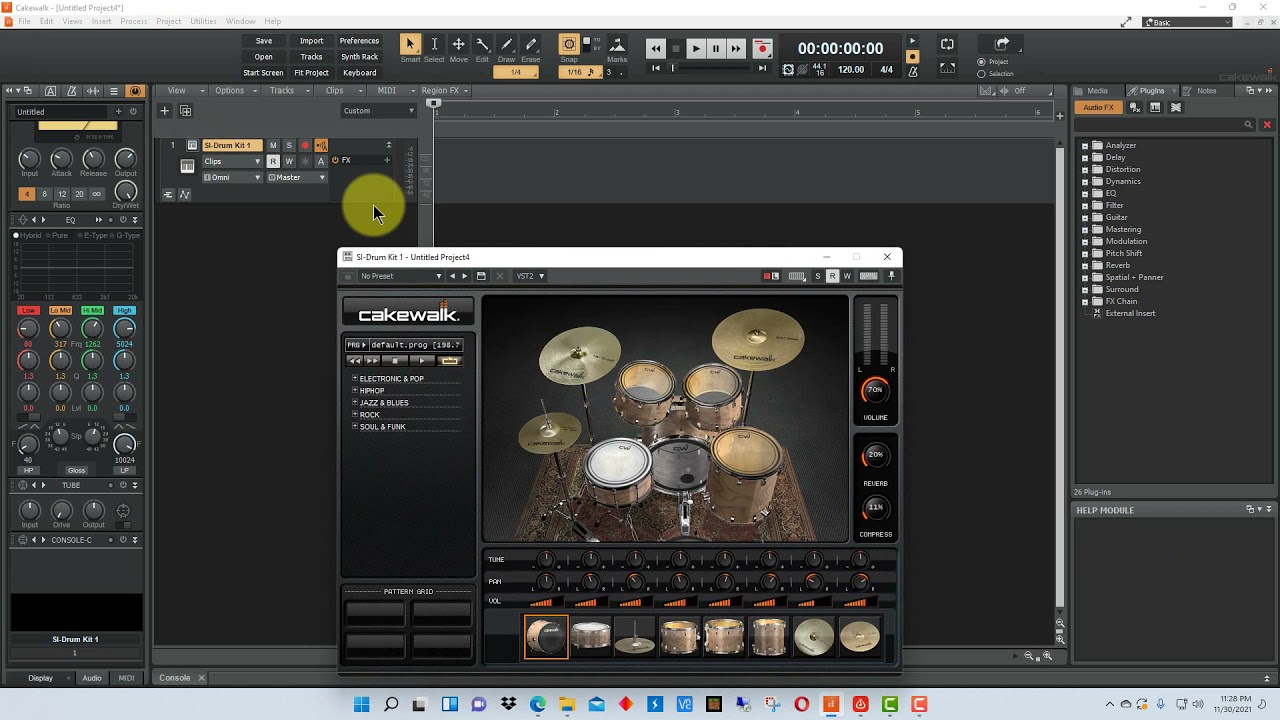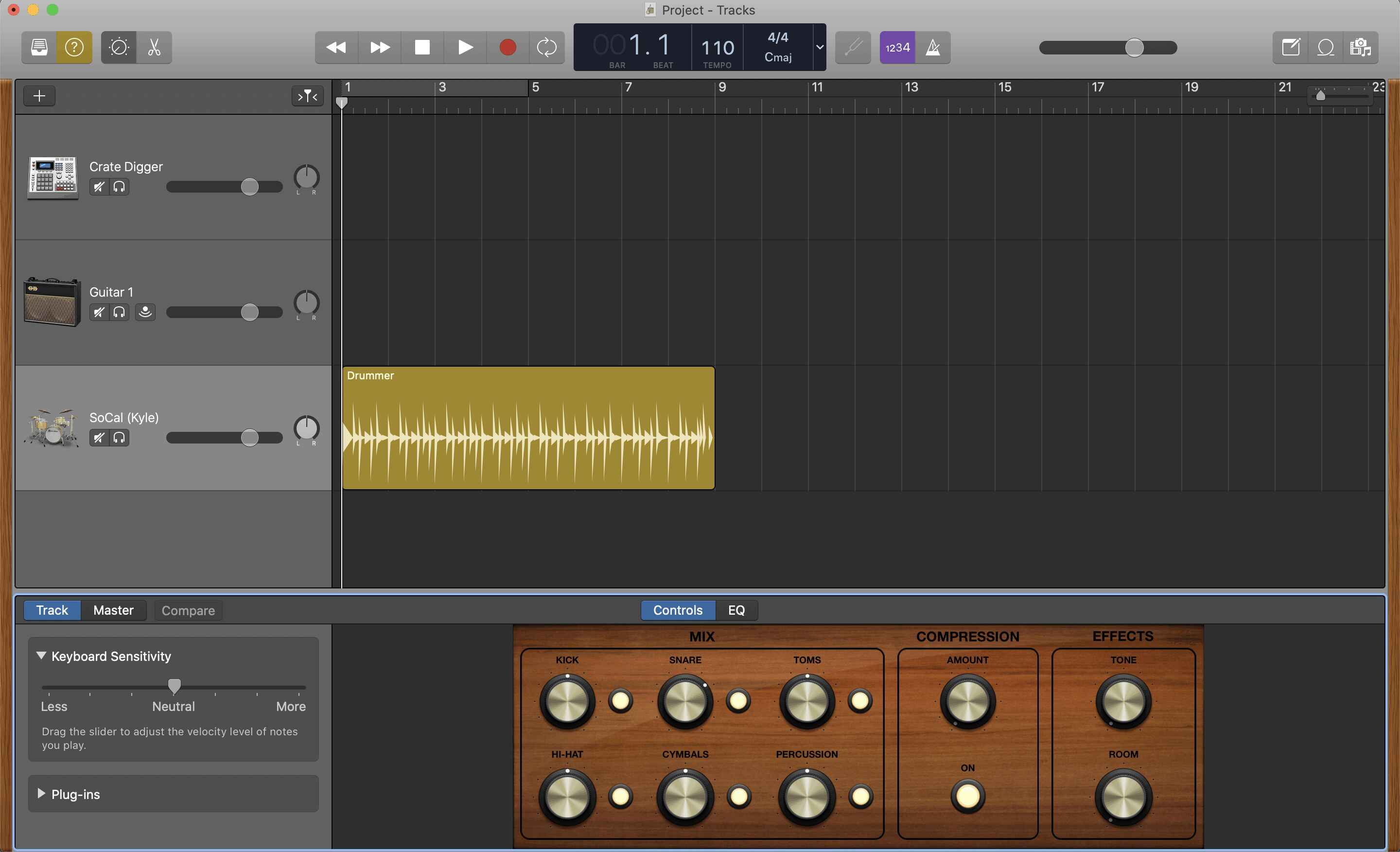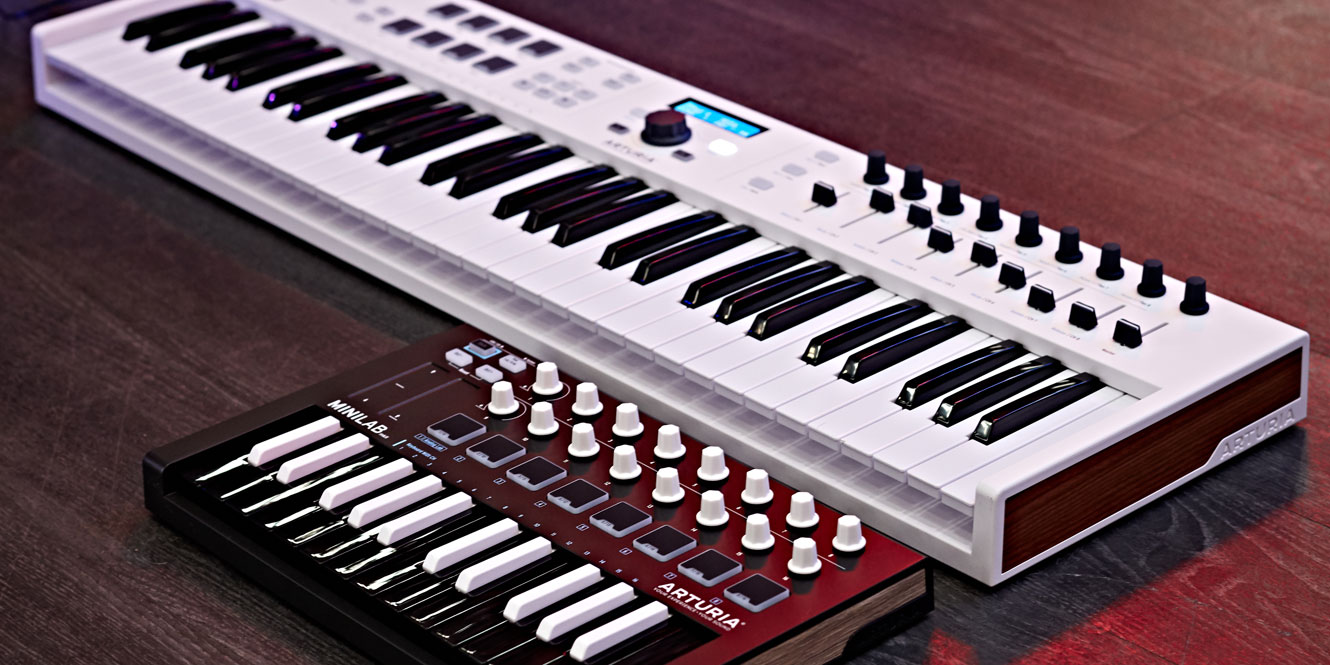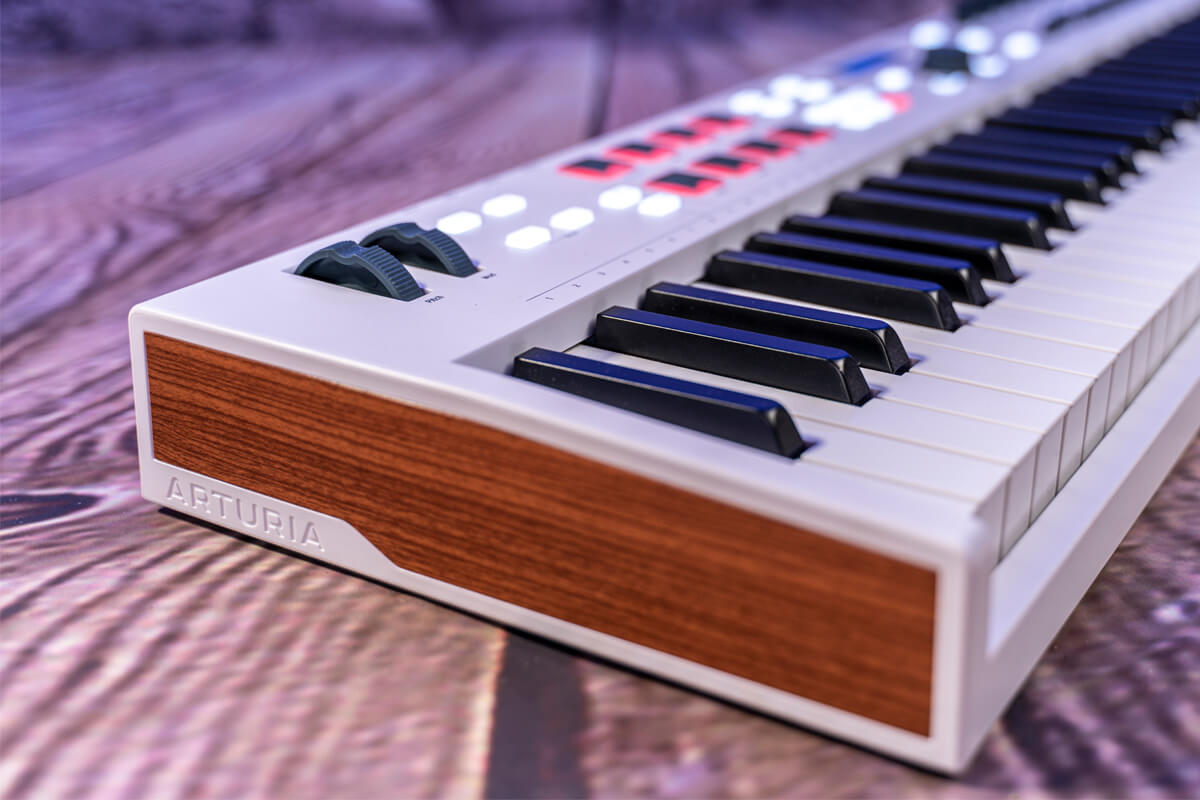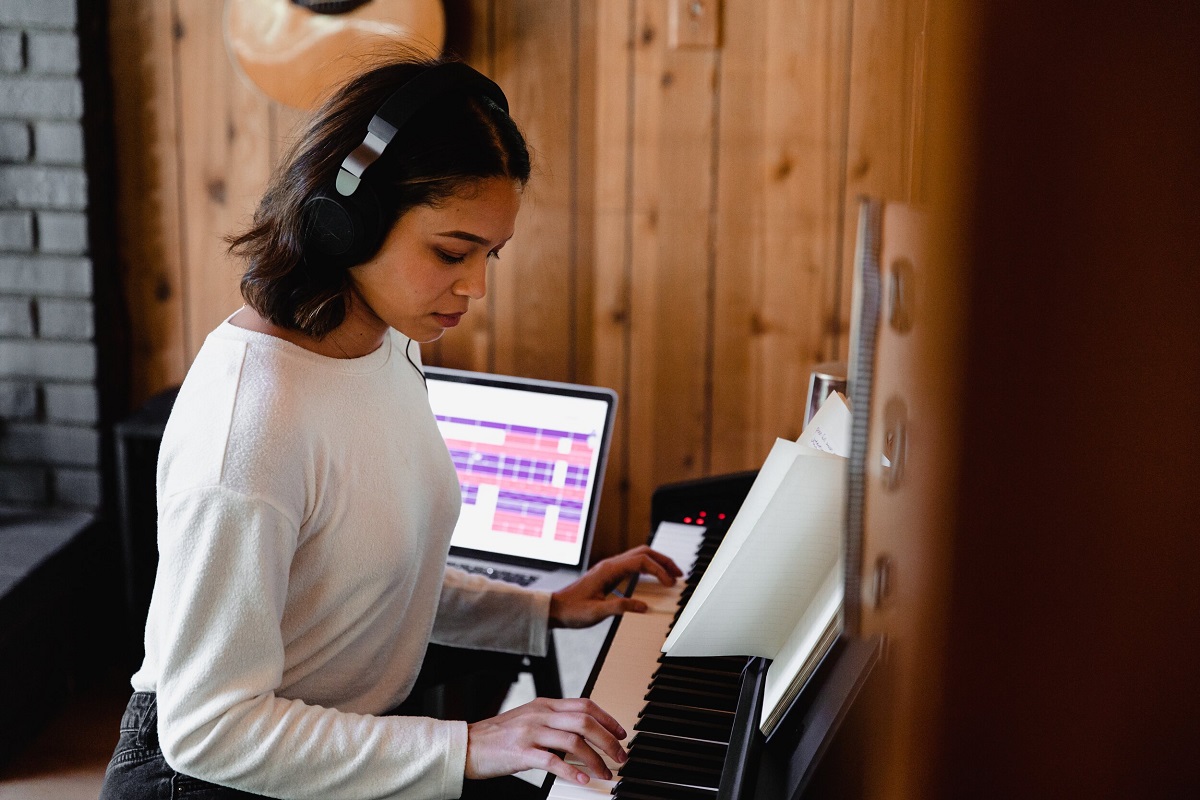Introduction
So, you've got your hands on a MIDI keyboard and you're ready to dive into the world of music creation in BandLab. Congratulations! A MIDI keyboard opens up a whole new realm of possibilities, allowing you to express your musical ideas with greater depth and nuance. Whether you're a seasoned musician or just starting out, integrating a MIDI keyboard into your BandLab workflow can revolutionize your music production experience.
In this guide, we'll explore the ins and outs of using a MIDI keyboard in BandLab. From setting up your MIDI keyboard to leveraging its full potential for recording, editing, and adding virtual instruments, we've got you covered. By the end of this journey, you'll be equipped with the knowledge and skills to harness the power of your MIDI keyboard within the BandLab environment.
BandLab offers a user-friendly platform for music creation, collaboration, and sharing. With its seamless integration of MIDI devices, including keyboards, you can unleash your creativity and bring your musical visions to life. Whether you're into electronic music, pop, rock, jazz, or any other genre, the versatility of a MIDI keyboard combined with the features of BandLab provides a dynamic playground for your musical endeavors.
So, grab your MIDI keyboard, fire up BandLab, and let's embark on this exciting exploration of music-making possibilities. Whether you're looking to lay down catchy melodies, craft intricate harmonies, or experiment with cutting-edge sounds, your MIDI keyboard will serve as your trusty companion on this sonic adventure. Let's dive in and unlock the full potential of your MIDI keyboard in BandLab.
Setting Up Your MIDI Keyboard in BandLab
Before you can start creating music with your MIDI keyboard in BandLab, you’ll need to ensure that the setup process is seamless and trouble-free. Here’s a step-by-step guide to get your MIDI keyboard up and running in BandLab:
- Connect Your MIDI Keyboard: Begin by connecting your MIDI keyboard to your computer using a USB cable or MIDI interface. Ensure that the necessary drivers are installed for your MIDI device to communicate effectively with your computer’s operating system.
- Launch BandLab: Once your MIDI keyboard is connected, launch the BandLab application on your computer. If you haven’t already installed BandLab, head to their website and download the software to kickstart your musical journey.
- Access Settings: Within the BandLab interface, navigate to the settings or preferences section to configure your MIDI keyboard. Locate the MIDI settings to establish a connection between your MIDI keyboard and BandLab.
- Enable MIDI Input: In the MIDI settings, ensure that your MIDI keyboard is recognized as an input device. BandLab should detect your MIDI keyboard, allowing you to utilize it for music creation within the platform.
- Test Your MIDI Keyboard: To verify that your MIDI keyboard is functioning correctly in BandLab, play a few notes on the keyboard and observe the on-screen response within the software. If the notes are registered and displayed in BandLab, your MIDI keyboard is successfully set up and ready for action.
With your MIDI keyboard seamlessly integrated into BandLab, you’re now poised to unleash its full potential for music creation. The setup process lays the foundation for a smooth and efficient workflow, enabling you to focus on crafting captivating melodies, harmonies, and rhythms without technical hindrances.
Now that your MIDI keyboard is set up in BandLab, it’s time to delve into the exciting realm of music production using this powerful combination of hardware and software.
Choosing the Right MIDI Input
When working with a MIDI keyboard in BandLab, selecting the appropriate MIDI input is crucial to ensure seamless communication between your keyboard and the software. BandLab offers multiple options for MIDI input selection, allowing you to tailor the configuration to your specific needs and setup. Here’s how to choose the right MIDI input for your MIDI keyboard in BandLab:
- Selecting Your MIDI Device: Upon launching BandLab, navigate to the MIDI settings or preferences within the software. Look for the section that allows you to choose the MIDI input device. BandLab should detect your connected MIDI keyboard, and it will be listed as an available input device.
- Configuring MIDI Channels: If your MIDI keyboard supports multiple MIDI channels, you can configure the MIDI input settings in BandLab to correspond with the channels on your keyboard. This flexibility enables you to control different virtual instruments or software modules within BandLab using distinct MIDI channels on your keyboard.
- Mapping MIDI Controls: Some MIDI keyboards feature assignable controls such as knobs, sliders, and buttons. In BandLab, you can map these MIDI controls to various parameters within the software, allowing for tactile manipulation of virtual instruments, effects, and mixing settings directly from your keyboard.
- Managing MIDI Latency: Latency, or the delay between pressing a key on your MIDI keyboard and hearing the sound, can impact the playing experience. BandLab offers settings to manage MIDI latency, ensuring that your keyboard’s response feels immediate and natural during music creation.
By choosing the right MIDI input options in BandLab, you can optimize the interaction between your MIDI keyboard and the software, empowering you to express your musical ideas with precision and fluidity. Whether you’re triggering virtual drum pads, playing expressive piano phrases, or manipulating synth parameters in real time, the correct MIDI input configuration is essential for a seamless and immersive music production experience.
With the MIDI input settings configured to your preferences, your MIDI keyboard becomes a powerful tool for shaping and performing music within the BandLab environment. Now, let’s explore how to leverage your MIDI keyboard for recording, editing, and integrating virtual instruments into your musical creations.
Using MIDI Keyboard to Record and Edit Music
Once your MIDI keyboard is set up and the MIDI input is configured in BandLab, you can harness its capabilities to record and edit music with precision and creativity. Here’s how to leverage your MIDI keyboard for seamless music production within BandLab:
- Recording MIDI Data: With your MIDI keyboard connected and configured, you can start recording MIDI data directly into BandLab. Whether it’s capturing melodic lines, chord progressions, or intricate rhythms, your keyboard serves as a versatile input device for translating your musical expressions into digital form.
- Real-Time Performance: Utilize your MIDI keyboard to perform music in real time, capturing the nuances of your playing with expressive dynamics and articulations. BandLab’s recording functionality allows you to preserve the subtleties of your performance, ensuring that your musical ideas are faithfully captured in the digital realm.
- Editing MIDI Notes: Once recorded, MIDI data from your keyboard can be edited within BandLab’s intuitive interface. Adjust note velocities, lengths, and positions, fine-tuning the musical phrases to achieve the desired musical expression. This flexibility empowers you to refine your performances and compositions with precision.
- Quantization and Humanization: BandLab offers tools for quantizing MIDI notes to align them with the rhythmic grid, ensuring tight and polished performances. Conversely, the humanization feature allows you to introduce subtle timing variations, injecting a natural feel into your music, akin to live acoustic performances.
- Layering and Multitrack Recording: Expand your musical arrangements by layering multiple MIDI tracks recorded from your keyboard. Whether it’s building lush orchestral textures or crafting intricate electronic soundscapes, your MIDI keyboard serves as a versatile instrument for multitrack recording within BandLab.
By utilizing your MIDI keyboard to record and edit music in BandLab, you unlock a world of possibilities for musical expression and production. Whether you’re capturing inspired improvisations, meticulously crafting compositions, or experimenting with innovative sonic textures, your MIDI keyboard serves as a conduit for channeling your creativity into the digital realm.
With the ability to record, edit, and refine MIDI performances, your MIDI keyboard becomes an indispensable tool for shaping musical ideas within the dynamic environment of BandLab. Now, let’s explore how to augment your MIDI keyboard with a diverse array of virtual instruments to expand your sonic palette.
Adding Virtual Instruments to Your MIDI Keyboard
BandLab offers a rich selection of virtual instruments that can be seamlessly integrated with your MIDI keyboard, expanding your sonic palette and creative possibilities. Here’s how you can add and harness virtual instruments in conjunction with your MIDI keyboard within the BandLab environment:
- Browsing Virtual Instrument Library: Explore BandLab’s extensive library of virtual instruments, encompassing everything from classic synthesizers and realistic pianos to cutting-edge electronic soundscapes and orchestral textures. The diverse array of virtual instruments caters to a wide spectrum of musical genres and creative preferences.
- Assigning Virtual Instruments to MIDI Channels: Once you’ve selected a virtual instrument from BandLab’s collection, you can assign it to a specific MIDI channel, allowing your MIDI keyboard to control and play the instrument. This seamless integration enables you to access a myriad of sounds and timbres directly from your keyboard.
- Expressive Control with MIDI Parameters: Many virtual instruments within BandLab respond to MIDI control messages, enabling you to modulate parameters such as filter cutoff, resonance, envelope settings, and more using the knobs, sliders, and wheels on your MIDI keyboard. This tactile interaction adds a level of expressiveness and dynamism to your performances.
- Layering and Splitting Sounds: With your MIDI keyboard, you can layer multiple virtual instruments to create rich, layered textures or split the keyboard to play different instruments simultaneously. This versatility allows for complex arrangements and performance techniques, enhancing the depth and complexity of your musical compositions.
- Recording Virtual Instrument Performances: Utilize your MIDI keyboard to record performances with virtual instruments directly into BandLab. Whether it’s crafting intricate melodies, crafting lush chord progressions, or sculpting evocative soundscapes, your MIDI keyboard becomes the gateway to a vast sonic landscape within the software.
By adding virtual instruments to your MIDI keyboard in BandLab, you expand your sonic toolkit, enabling you to access a diverse range of sounds and textures directly from your keyboard. Whether you’re seeking classic analog synth tones, realistic orchestral emulations, or experimental electronic timbres, the fusion of your MIDI keyboard with BandLab’s virtual instruments opens up a world of sonic exploration and musical creativity.
With virtual instruments seamlessly integrated into your MIDI keyboard workflow, you have the power to shape and sculpt captivating musical compositions within the immersive environment of BandLab. Now, let’s explore some tips and tricks to enhance your experience of using a MIDI keyboard in BandLab.
Tips and Tricks for Using MIDI Keyboard in BandLab
As you continue to explore the creative possibilities of using a MIDI keyboard in BandLab, consider these tips and tricks to enhance your music-making experience and streamline your workflow:
- Customizing MIDI Mapping: Take advantage of BandLab’s MIDI mapping capabilities to customize the assignment of MIDI controls on your keyboard to various parameters within the software. This personalized mapping empowers you to tailor the functionality of your keyboard to suit your specific production and performance needs.
- Exploring MIDI Effects: Experiment with MIDI effects within BandLab to transform and manipulate the MIDI data generated by your keyboard. From arpeggiators and chord generators to MIDI quantization tools, MIDI effects can add depth and complexity to your musical compositions, unlocking new avenues for sonic exploration.
- Utilizing Keyboard Shortcuts: Familiarize yourself with BandLab’s keyboard shortcuts for common tasks such as recording, playback, quantization, and editing. Mastering these shortcuts can significantly expedite your workflow, allowing you to focus on the creative aspects of music production without interruption.
- Exploring Scale Modes: Many MIDI keyboards offer scale modes that restrict the notes played to conform to a specific musical scale, making it easier to stay in key and experiment with harmonic progressions. BandLab’s compatibility with scale modes empowers you to effortlessly explore diverse musical scales and modalities with confidence.
- Collaborating in Real Time: Leverage BandLab’s collaborative features to engage in real-time music creation with other musicians, regardless of geographical distance. Your MIDI keyboard becomes a conduit for live musical interactions, enabling seamless collaboration and creative synergy within the BandLab ecosystem.
By incorporating these tips and tricks into your workflow, you can elevate your use of a MIDI keyboard in BandLab, unlocking new dimensions of creativity and efficiency in your music production endeavors. With these strategies at your disposal, your MIDI keyboard becomes a versatile and indispensable tool for realizing your musical vision within the dynamic environment of BandLab.







